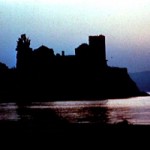Two books that relate Scandinavia and the Vikings to Byzantium and the Balkans were acquired in March 2016. The first is:
Byzantium and the Viking World, edited by Fedir Androshchuk, Jonathan Shepard, Monica White (Uppsala, 2016).
Contents, v-vi;
Acknowledgments, vii;
Preface, ix-xi;
Notes on contributors, xiii-xxvii;
Abbreviations, xix-xxii;
General maps, xxiii-[xxvii].
Part I: Contacts and Cultural Transfer Between Byzantium and the Viking World
1. Jonathan Shepard, “Small worlds, the general synopsis, and the British ‘way from the Varangians to the Greeks,'” 3-35;
2. Lesley Abrams, “Connections and exchange in the Viking world,” 37-52;
3. Roland Scheel, “Concepts of cultural transfer between Byzantium and the north,” 53-87.
Part II: Contacts Reflected in the Material Culture
4. Fedir Androshchuk, “What does material evidence tell us about contacts between Byzantium and the Viking world c. 800-1000?” 91-116;
5. Marek Jankowiak, “Byzantine coins in Viking-Age northern lands,” 117-139;
6. Florent Audy, “How were Byzantine coins used in Viking-Age Scandinavia?” 141-168;
7. Magnus Källström, “Byzantium reflected in the runic inscriptions of Scandinavia,” 169-186;
8. Thorgunn Snædal, “Runes from Byzantium: reconsidering the Piraeus lion,” 187-214;
9. Fedir Androshchuk & Gülgün Köroğlu, “A Viking sword-bearing resident of southern Asia Minor?” 215-240;
10. Valeri Yotov, “Traces of the presence of Scandinavian warriors in the Balkans,” 241-253;
11. Mathias Bäck, “Birka and the archaeology of remotion: early medieval pottery from Byzantium and beyond in eastern Scandinavia,” 255-280;
12. Inga Hägg, “Silks at Birka,” 281-304;
13. Valentina S. Shandrovskaia, “The seal of Michael, Grand Interpreter of the Varangians,” 305-312.
Part III: Contacts Reflected in the Written Sources
14. Elena Mel’nikova, “Rhosia and the Rus in Constantine VII Porphyrogennetos’ De administrando imperio,” 315-336;
15. Anna Litvina & Fjodor Uspenskij, “Contempt for Byzantine gold: common plot elements in Rus chronicles and Scandinavian sagas,” 337-343;
16. Sverrir Jakobsson, “The Varangian legend: testimony from the Old Norse sources,” 345-362;
17. Scott Ashley, “Global worlds, local worlds: connections and transformations in the Viking Age,” 363-387.
Part IV: Christianity and the Intensification of Contacts
18. Monica White, “Relics and the princely clan in Rus,” 391-408;
19. John H. Lind, “Christianity on the move; the role of the Varangians in Rus and Scandinavia,” 409-440.
Glossary, 443-445;
List of illustrations and acknowledgements, 447-451;
Index, 453-463.
Scandinavia and the Balkans: Cultural Interactions with Byzantium and Eastern Europe in the First Millennium AD, edited by Oksana Minaeva and Lena Holmquist (Cambridge Scholars Publishing, 2015).
 Table of Contents, v-vi;
Table of Contents, v-vi;
Preface, vii;
Introduction: Scandinavia and the Balkans in the Eyes of Each Other, ix-xxi.
Part I: Glimpses on Early Contacts between Scandinavia and the Balkans.
Ivan Marazov, “The Gundestrup Cauldron: Iconography and Semantics of the ‘Warriors’ Frieze,'” 3-14;
Zarko Zhdrako and Emilia Dencheva, “An Epigraphic Monument of the Goths from Constantinople,” 15-28;
Vladimir Petrukhin, “Rus’, Scandinavians, and the Balkans in the Ninth and Tenth Centuries,” 55-66;
Pavel Georgiev, “The Old German Runics and the Gotho-Moesian Alphabet of Bishop Wulfida from the Foot of the Balkan Mountain Range (Village of Bogomolsko, Antonovo Municipality),” 29-52.
Part II: Meetings of Scandinavia and the Balkans as Reflected in Written Sources
Vladimir Petrukhin, “Rus’, Scandinavians, and the Balkans in the Ninth and Tenth Centuries,” 55-66;
Elena Melnikova, “The Penetration of Eastern Christianity into Scandinavia: Historical Memory as Reflected in Sagas,” 67-71;
Tatjana Jackson, “Harald, Bolgara Brennir, in Byzantine Service,” 72-82;
Galina Glazyrina, “Gaining Glory, Wisdom and Knowledge: Scandinavians in Byzantium (The Case of Eireks Saga Víđörla),” 83-95;
Tsvetelin Stepanov, “The Giants-Motif in Europe, North and South,” 96-105;
Antoaneta Granberg, “The Episode about the “Unclean” Nations in the Serbian Alexandrida and the Chronograph-Alexandria,” 106-119.
Part III: Scandinavia and the Balkans: Evidence of Artefacts
Thomas Thomov, “Drekar from Hagia Sofia,” 123-137;
Georgi Atanasov, “Concerning the Size of the Rus’-Varangian Army of Prince Svyatoslav During his Raid to Bulgaria and in the Battle at Drastar in 971,” 138-157;
Charlotte Hedenstierna-Jonson, “Close Encounters with the Byzantine Border Zones: On the Eastern Connections of the Birka Warrior,” 158-173;
Valery Sedykh, ” Jaroslavl Volga Area in the System of International Relations During the Early Medieval Epoch,” 174-186;
Valery Yotov, “Traces of Scandinavian Warriors’ Presence in the Balkans,” 187-203;
Frans-Arne Stylegar, “Eastern Imports in the Arctic,” 204-214.



